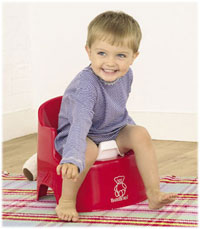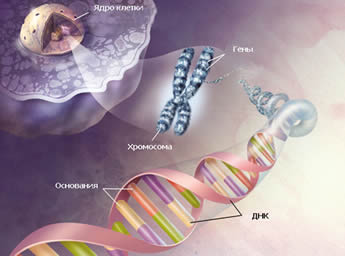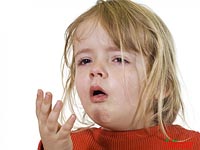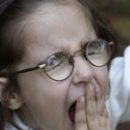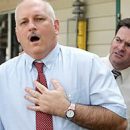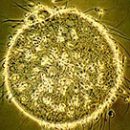Today are terms «Hyperactivity» and «Lack of attention» so well used that they are starting to apply almost to each second restless child. But every child is unable to sit in place for a long time or not listening to parents, hyperactive?
Content
Hyperactivity or fidget?
Take, for example, a two-way child. If he can not play with the same toy for more than two minutes and refuses to listen to how you read the book to him, then it means that he is hyperactive? In fact, most likely, this is a healthy and the most common restless kid busy studying the surrounding world. After all, the average rate of attention for this age group – less than 2 minutes! As a rule, hyperactivity is not diagnosed in children under 5-6 years, since being active (and even very active) and restless in this pre-school age – Absolutely normal.
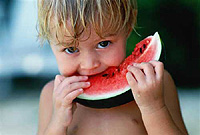 In the science literature, such a disorder as hyperactivity is described as «Lack of attention and / or hyperactive-impulsive behavior that does not match the child's age». Child under 6 years old can be diagnosed «Hyperactivity» only in extreme cases, if it shows unusual, «Ayspeted» The impulsiveness imposing his life at risk - moves the road in front of cars or jumps with an exorbitantly high height. Kids with hyperactivity almost from the very birth mobile, excit, they have a dream and appetite, they are badly added in weight. The development of phrase speech in such a baby is late. At the same time, it is hypertrophyedly moving, albeit embarrassing, often bother about the angles, the objects drop. Especially seriously given to him small movements of the fingers — Buttoning buttons, shoe lace. It is hard to teach him to her tidy, he is stubborn, disobedient. An older child for the formulation of such a diagnosis should exercise behavioral disorders (neglect of generally accepted rules, the inability to have friends, problems in studying) more than in any one surrounding, for example, at the same time in school, and at home.
In the science literature, such a disorder as hyperactivity is described as «Lack of attention and / or hyperactive-impulsive behavior that does not match the child's age». Child under 6 years old can be diagnosed «Hyperactivity» only in extreme cases, if it shows unusual, «Ayspeted» The impulsiveness imposing his life at risk - moves the road in front of cars or jumps with an exorbitantly high height. Kids with hyperactivity almost from the very birth mobile, excit, they have a dream and appetite, they are badly added in weight. The development of phrase speech in such a baby is late. At the same time, it is hypertrophyedly moving, albeit embarrassing, often bother about the angles, the objects drop. Especially seriously given to him small movements of the fingers — Buttoning buttons, shoe lace. It is hard to teach him to her tidy, he is stubborn, disobedient. An older child for the formulation of such a diagnosis should exercise behavioral disorders (neglect of generally accepted rules, the inability to have friends, problems in studying) more than in any one surrounding, for example, at the same time in school, and at home.
Most children at the same time, especially not with clearly pronounced symptoms, does not need drug treatment. Although they need increased attention in training and correction of behavior, and, if necessary, massage and physiotherapy can be appointed. Clinical psychologist Thai Colbert reports that when the behavior «Considered as pathology, doctors, in any case, prescribe medicines under the pretext of establishing chemical imbalance. But since there is no imbalance, everything that medicines do – Limit brain capabilities».
Signs of hyperactivity
Key symptom of hyperactivity – not at all high level of activity. Primary features – Inability to focus on quite a long time and overpulsive behavior. Minor disorders in the central nervous system in such children lead to the fact that they cannot focus on some such task and quickly switch from one activity to another. This condition refers to the so-called minimal brain dysfunction, the reason for which microtraums are considered during childbirth or oxygen starvation of the fetus.
Currently, specialists are increasingly inclined to abandon the term «Hyperactivity» In favor of the term «Lack of attention». Unfortunately, special tests for the diagnosis of this problem does not exist. To distinguish these disorders from ordinary active behavior, a long observation is required and a rather experienced eye. To determine such a difference, a psychologist needs to know the behavior and academic performance in school and at home. Usually, a psychiatrist or psychologist says to parents that their child suffers from disorder affecting his ability to learn, which is most often known as «Training Disorder». This disorder is also called «Syndrome of attention deficit» (ADD) or, most often today, «Syndrome of attention deficit with hyperactivity» (ADHD). In Sweden it is known as «Disorder of attention, perception and control of motor functions», Although at present the existence of this disorder is questioned.
Dr. Luria Schulat, practicing psychiatrist from Israel, says: «Disorder of attention deficit with hyperactivity is syndrome, not a disease. Symptoms are so common that we could come to the conclusion that all children fit this diagnosis». Attention deficit syndrome with hyperactivity is not a disease, but just child behavior. There are no objective scientific criteria confirming the existence in terms of diagnosis «Hyperactivity» (ADHD). One can only select some signs indicating the possibility of such a diagnosis: loss of toys, pencils and handles, restless movements, the general activity of the child, the unwillingness to focus on the lesson, failure to comply with the homework and the like. Once it was considered a bad behavior. For him put in the corner or, in the worst case, deprived ice cream.
The main problems begin, as a rule, when the child goes to school. Such children are harder to learn, they have a terrible handwriting, the wrong speech. They can not focus on school. The child's intellect is absolutely normal, and often even higher than that of the peers, but he often begins to lag in studies, since it is inconsistent, impulsive, unrestrainedly chatter, inconsistent, cannot focus on one subject. Peers do not want to communicate with him, play, so often fidget is friends with the younger or socially disadvantaged children, and sometimes it turns out to be a bandwidth or in the courtyard, chooses a role «regular» Shuta. Being very motor - nonsense, movable, capricious, such children are raised by teachers and peers. They have unmotivated attacks of inadequate behavior, often accompanied by aggression. To adolescent age, motor hyperactivity usually leaves, but the inability to training, lack of attention, inability to focus persist. 15-20% of these symptoms remain in adulthood.
Children often observe what doctors call «Double exception». They show explicit inability to something, but also just as clear talent in another field. Analyzing the biographies of great people, scientists find signs of ADHD in many. It is believed that Alexander Macedonian, Leonardo da Vinci, Wolfgang Amadeus Mozart, Ludwig Van Beethoven, Alexander Pushkin, Benjamin, Albert Einstein, Edgar, Henry Ford, Ernest Hemingway, Pablo Picasso, Walt Disney, Pablo Picasso, Walt Disney.



